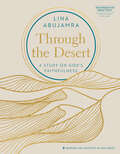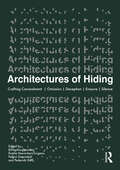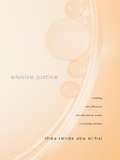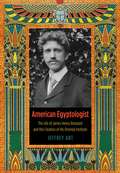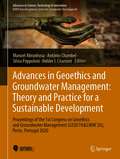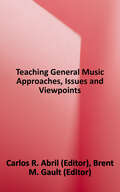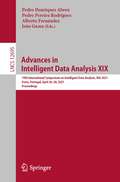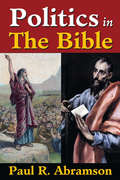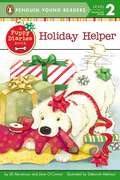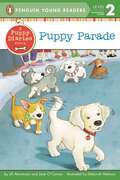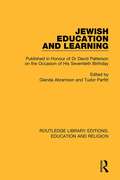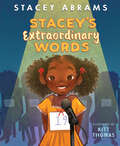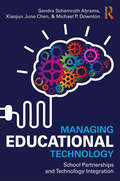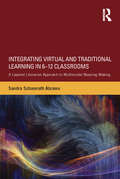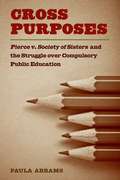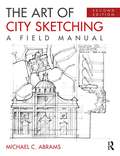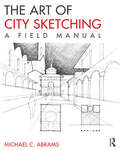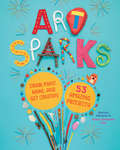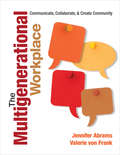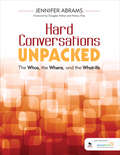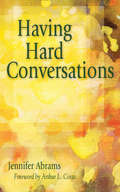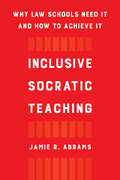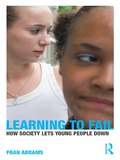- Table View
- List View
Through the Desert - Includes Six-Session Video Series: A Study on God's Faithfulness (Mapping the Footsteps of God Series)
by Lina AbuJamraThis 6-week interactive video-based Bible study of God&’s faithfulness during difficult times invites you to experience a fresh move of God in your life even in spiritual deserts. In the midst of suffering, we often feel spiritually parched. We wonder if God is with us in this barren land or if He is simply a mirage. Yet Scripture shows us that no matter where God&’s people find themselves—in battle or prison, in valley or wilderness—one thing is true: God is faithful. In this rich Bible study, Lina AbuJamra invites us on a journey to the desert with Abraham, the Israelites, John the Baptist, and Jesus. Lina&’s teaching, companion online videos, and thoughtful discussion questions help you find: A renewed sense of purpose.Freedom from feelings of failure and regret.A greater sense of trust in God.Deeper peace as God&’s promises overcome your fears.Gifts of mercy, purpose, and spiritual abundance in our own deserts. Through the Desert shows us how we can trust in God&’s presence while still acknowledging our pain. Because God longs to reveal His faithfulness to us … exactly when we need Him most.
Architectures of Hiding: Crafting Concealment | Omission | Deception | Erasure | Silence
by Rana Abughannam Émélie Desrochers-Turgeon Pallavi Swaranjali Federica GoffiArchitecture manifests as a space of concealment and unconcealment, lethe and alêtheia, enclosure and disclosure, where its making and agency are both hidden and revealed. With an urgency to amplify narratives that are overlooked, silenced and unacknowledged in and by architectural spaces, histories and theories, this book contends the need for a critical study of hiding in the context of architectural processes. It urges the understanding of inherent opportunities, power structures and covert strategies, whether socio-cultural, geo-political, environmental or economic, as they are related to their hidescapes – the constructed landscapes of our built environments participating in the architectures of hiding. Looking at and beyond the intentions and agency that architects possess, architectural spaces lend themselves as apparatuses for various forms of hiding and un(hiding). The examples explored in this book and the creative works presented in the interviews enclosed in the interludes of this publication cover a broad range of geographic and cultural contexts, discursively disclosing hidden aspects of architectural meaning. The book investigates the imaginative intrigue of concealing and revealing in design processes, along with moral responsibilities and ethical dilemmas inherent in crafting concealment through the making and reception of architecture.
Elusive Justice: Wrestling with Difference and Educational Equity in Everyday Practice (Teaching/Learning Social Justice)
by Thea Renda Abu El-HajElusive Justice addresses how educators think about and act upon, differences in schools - be they based on race, gender, class, or disability - and how discourse and practice about such differences are intimately bound up with educational justice. Rather than skip over contentious or uncomfortable dialogues about difference, Thea Abu El-Haj tackles them head on. Through rich and detailed ethnographic portraits of two schools with a commitment to social justice, she analyzes the ways discourses about difference provide a key site for both producing and resisting inequalities, and examines the dilemmas that emerge from either focusing on or ignoring them. In interrogating fundamental assumptions about difference and equity, Abu El-Haj deftly blends critique with a search for hope and possibility, to ultimately argue for ways educators might translate ideals about justice into effective practice.
American Egyptologist: The Life of James Henry Breasted and the Creation of His Oriental Institute
by Jeffrey AbtJames Henry Breasted (1865-1935) had a career that epitomizes our popular image of the archaeologist. Daring, handsome, and charismatic, he traveled on expeditions to remote and politically unstable corners of the Middle East, helped identify the tomb of King Tut, and was on the cover of Time magazine. But Breasted was more than an Indiana Jones--he was also an accomplished scholar, academic entrepreneur, and talented author who brought ancient history to life not just for students but for such notables as Teddy Roosevelt and Sigmund Freud. In American Egyptologist, Jeffrey Abt weaves together the disparate strands of Breasted's life, from his small-town origins following the Civil War to his evolution into the father of American Egyptology and the founder of the Oriental Institute in the early years of the University of Chicago. Abt explores the scholarly, philanthropic, diplomatic, and religious contexts of his ideas and projects, providing insight into the origins of America's most prominent center for Near Eastern archaeology. An illuminating portrait of the nearly forgotten man who demystified ancient Egypt for the general public, American Egyptologist restores James Henry Breasted to the world and puts forward a brilliant case for his place as one of the most important scholars of modern times.
Advances in Geoethics and Groundwater Management: Proceedings of the 1st Congress on Geoethics and Groundwater Management (GEOETH&GWM'20), Porto, Portugal 2020 (Advances in Science, Technology & Innovation)
by Manuel Abrunhosa António Chambel Silvia Peppoloni Helder I. ChaminéThis book gathers the peer-reviewed proceedings of the 1st congress on Geoethics & Groundwater Management (GEOETH&GWM'20), held in Porto, Portugal, in an online format on 18-22 May 2020. Hosted in School of Engineering (ISEP), Polytechnic of Porto based on Porto city (a UNESCO World Heritage Site), the international conference focused on what has now been dubbed “hydrogeoethics”, a novel transdisciplinary, scientific field integrating all dimensions of geoethics in groundwater science and practice. Given its scope, the book is of interest to all researchers and practitioners in the geosciences, hydrology, water resources, hydrogeology, natural resources management, environment, engineering, law, sociology, education, philosophy, culture, among others.This joint congress is the result of a collaborative agreement between the IAH (International Association of Hydrogeologists) and IAPG (International Association for Promoting Geoethics) and reflects the need for concerted actions to achieve sustainable development.The diversity, scale, significance and increasing magnitude of anthropogenic interactions with aquifers and groundwater, which often involve conflicting values or interests, call for analysis, discussions and decisions on the part of the agents involved, e.g. groundwater scientists, policymakers, managers, organisations, professionals and citizens. This approach calls for a responsible, sustainable and human approach to groundwater use and management.The groundwater community involved in the exploration and exploitation, use and management of this increasingly vital natural resource is becoming more and more aware that ethical issues pervade all our attitudes from concept to action and need to be addressed. Diverse values and cultures, science and education, law and policies, human and natural environments and the public and the economic sectors view groundwater and its value and/or role differently. The authors believe that in a globalised and interconnected world, common ground must be found in the interest of peace, human development and sustainability. The main topics covered here include:1. Fundamentals of hydrogeoethics: cultures, principles and geoethical values on groundwater science and engineering2. Lessons for a resilient and sustainable future with hydrogeoethics: case studies of geoethics in groundwater science-engineering, profession, and management3. Scientific and humanistic components of hydrogeoethics in groundwater education and professional training 4. Socio-hydrogeology and ethical groundwater management 5. Geoethics of decision making under uncertainty and ethical issues in neglecting groundwater functioning 6. Groundwater: geological, legal, social, and ethical challenges of a unique natural resource
Teaching General Music: Approaches, Issues, and Viewpoints
by Carlos R. Abril Brent M. GaultGeneral music is informed by a variety of teaching approaches and methods. These pedagogical frameworks guide teachers in planning and implementing instruction. Established approaches to teaching general music must be understood, critically examined, and possibly re-imagined for their potential in school and community music education programs. Teaching General Music brings together the top scholars and practitioners in general music education to create a panoramic view of general music pedagogy and to provide critical lenses through which to view these frameworks. The collection includes an examination of the most prevalent approaches to teaching general music, including Dalcroze, Informal Learning, Interdisciplinary, Kodály, Music Learning Theory, Orff Schulwerk, Social Constructivism, and World Music Pedagogy. In addition, it provides critical analyses of general music and teaching systems, in light of the ways children around the world experience music in their lives. Rather than promoting or advocating for any single approach to teaching music, this book presents the various approaches in conversation with one another. Highlighting the perceived and documented benefits, limits, challenges, and potentials of each, Teaching General Music offers myriad lenses through which to re-read, re-think, and re-practice these approaches.
Advances in Intelligent Data Analysis XIX: 19th International Symposium on Intelligent Data Analysis, IDA 2021, Porto, Portugal, April 26–28, 2021, Proceedings (Lecture Notes in Computer Science #12695)
by Pedro Henriques Abreu Pedro Pereira Rodrigues Alberto Fernández João GamaThis book constitutes the proceedings of the 19th International Symposium on Intelligent Data Analysis, IDA 2021, which was planned to take place in Porto, Portugal. Due to the COVID-19 pandemic the conference was held online during April 26-28, 2021.The 35 papers included in this book were carefully reviewed and selected from 113 submissions. The papers were organized in topical sections named: modeling with neural networks; modeling with statistical learning; modeling language and graphs; and modeling special data formats.
Politics in the Bible
by Paul AbramsonThe Bible is fundamental to Western culture. Political philosophers from Hobbes, Locke, Montesquieu, and Rousseau to modern political theorists such as George H. Sabine, Leo Strauss, and Sheldon S. Wolin have drawn upon biblical examples. American political leaders, such as Thomas Paine, Abraham Lincoln, and William Jennings Bryan all drew heavily upon the Bible. Today, most contemporary politicians display less familiarity with Scripture although many proudly proclaim themselves to be born-again Christians. Politics in the Bible has a simple goal: to help readers to think critically about how the Bible illuminates understanding of justice, leadership, and politics. For a political scientist, there are great advantages to studying the Bible. Students of the Bible have short texts to analyze, but they have a history of two thousand years of Jewish and Christian scholarly discussion. In that tradition, Paul R. Abramson analyzes stories drawn from eighteen of the thirty-nine books of the Hebrew Bible and fifteen of the twenty-seven books of the New Testament. Abramson argues that the Bible is a book that should be read even by those who do not believe it has any transcendent significance. One can choose to read it as the revealed word of God, as a source of Western morality, as a compilation of interesting stories, poetry, and history, or as a work of great literature. Although this book discusses selected stories that have political implications, it also considers parts that have literary merit. This unusual volume may stimulate new thinking about the Bible as a source of insight into political ideas.
Holiday Helper (Penguin Young Readers, Level 2)
by Jill Abramson Jane O'ConnorScout is ready for her first Christmas!It's Scout's first winter, and she can't wait for Christmas! She loves the shiny presents with their gorgeous ribbons, which look awfully like fancy tug-of-war toys! By the time Scout's through with them, the presents are a mess. Is Christmas morning ruined? Of course not! Fans of Puppy Diaries will find this story hilarious, sweet, and perfect for young readers!
Puppy Parade (Penguin Young Readers, Level 2)
by Jill Abramson Jane O'ConnorScout, from the immensely popular Puppy Diaries, is entering a puppy parade! Scout is sure that when the awards are handed out at the end of the parade, she will win one of the important ribbons. Will it be for best behaved? Or most beautiful? Or friendliest? The answer is both surprising and very funny.
Jewish Education and Learning: Published in Honour of Dr. David Patterson on the Occasion of His Seventieth Birthday (Routledge Library Editions: Education and Religion #1)
by Glenda Abramson Tudor ParfittFirst published in 1994. This volume, dedicated to Dr David Patterson, founding President of the Oxford Centre for Postgraduate Hebrew Studies, takes as its theme Jewish education and learning throughout the ages. But it is the ‘Academy’ - interpreted here to mean an institution of Judaic scholarship - which dominates this collection of essays. For almost three thousand years centres of Jewish learning have flourished in many parts of the world. This volume discusses these institutions from biblical times to the present. From the time of the Mishnaic Academy at Yavneh, established in the first century CE, the academies were more than schools of higher religious education. They incorporated rational analysis of the scriptures, the natural sciences and other secular studies. Some of the most celebrated academies, such as those in Cairo and Tunisia, and later in the Iberian Peninsula were of a very high intellectual order, sometimes superior to the great Christian universities. It was at these institutions that the great Jewish legal and literary works were written and completed. This collection of essays has been written by outstanding scholars who have been associated with David Patterson and the Oxford Centre. The essays explore the nature and function of the ‘Jewish Academies' in the broadest sense, the leading personalities associated with them and their social, cultural and moral effect on the Jewish communities of their day.
Stacey's Extraordinary Words
by Stacey Abrams#1 New York Times bestseller and NAACP Image Award winner! The debut picture book from iconic voting rights advocate and bestselling author Stacey Abrams is an inspiring tale of determination, based on her own childhood. Stacey is a little girl who loves words more than anything. She loves reading them, sounding them out, and finding comfort in them when things are hard. But when her teacher chooses her to compete in the local spelling bee, she isn’t as excited as she thought she’d be. What if she messes up? Or worse, if she can’t bring herself to speak up, like sometimes happens when facing bullies at school? Stacey will learn that win or lose . . . her words are powerful, and sometimes perseverance is the most important word of all. Plus don't miss the follow-up from the same team, Stacey's Remarkable Books!
Managing Educational Technology: School Partnerships and Technology Integration
by Sandra Schamroth Abrams Xiaojun June Chen Michael P. DowntonManaging Educational Technology: School Partnerships and Technology Integration by Sandra Schamroth Abrams, Xiaojun June Chen, and Michael P. Downton. Sandra Schamroth Abrams is an associate professor in the Department of Curriculum and Instruction at St. John’s University, USA. Xiaojun Chen is an associate professor of educational technologies in the Department of Curriculum and Instruction at St. John’s University, USA. Michael P. Downton is an assistant professor in the Department of Curriculum and Instruction at St. John’s University, USA.
Integrating Virtual and Traditional Learning in 6-12 Classrooms: A Layered Literacies Approach to Multimodal Meaning Making
by Sandra Schamroth AbramsIntegrating Virtual and Traditional Learning in 6-12 Classrooms introduces a model of "layered literacies" as a framework for describing and illustrating how students’ digital experiences can inform educational methods. Through the lens of layered literacies, educators can envision opportunities to draw upon adolescents’ out-of-school interests and activities to meaningfully integrate digital practices within academic contexts. Such an approach facilitates innovative teaching, inspired learning, and successful pedagogy, and it thoughtfully highlights the role of technology within mandated standards-based instruction in public schools. Combining foundational and contemporary theories, supported by data from multiple studies of adolescent learning, and honoring teachers’ and students’ experiences and resources, this text helps educators reconceptualize the ways students learn through and with digital texts and negotiate the connection between online and offline spaces. A companion website extends the discussion onto the screen, engaging readers in an intertextual approach to learning that complements the concept of layering literacies across disciplines. With a foreword by Jennifer Rowsell and an afterword by Bill Cope and Mary Kalantzis, it will be of interest to experienced educators and administrators, as well as postgraduate, graduate, and undergraduate students of education.
Education and the Commercial Mindset
by Samuel E. AbramsThe movement to privatize K-12 education is stronger than ever. Samuel Abrams examines the rise of market forces in public education and reveals how a commercial mindset that sidesteps fundamental challenges has taken over. Nevertheless, public schools should adopt lessons from the business world, such as raising teacher salaries to attract talent.
Cross Purposes: Pierce v. Society of Sisters and the Struggle over Compulsory Public Education
by Paula Abrams"A definitive study of an extremely important, though curiously neglected, Supreme Court decision,Pierce v. Society of Sisters. " ---Robert O'Neil, Professor of Law Emeritus, University of Virginia School of Law "A careful and captivating examination of a dramatic and instructive clash between nationalism and religious pluralism, and of the ancient but ongoing struggle for control over the education of children and the formation of citizens. " ---Richard W. Garnett, Professor of Law and Associate Dean, Notre Dame Law School "A well-written, well-researched blend of law, politics, and history. " ---Joan DelFattore, Professor of English and Legal Studies, University of Delaware In 1922, the people of Oregon passed legislation requiring all children to attend public schools. For the nativists and progressives who had campaigned for the Oregon School Bill, it marked the first victory in a national campaign to homogenize education---and ultimately the populace. Private schools, both secular and religious, vowed to challenge the law. The Catholic Church, the largest provider of private education in the country and the primary target of the Ku Klux Klan campaign, stepped forward to lead the fight all the way to the U. S. Supreme Court. InPierce v. Society of Sisters(1925), the court declared the Oregon School Bill unconstitutional and ruled that parents have the right to determine how their children should be educated. Since then, Pierce has provided a precedent in many cases pitting parents against the state. Paula Abrams is Professor of Constitutional Law at Lewis & Clark Law School.
The Art of City Sketching: A Field Manual
by Michael C. AbramsThe Art of City Sketching: A Field Manual guides readers through the process of freehand architectural sketching and explains orthographic, diagrammatic, three-dimensional, and perceptual-type drawings. The book presents hundreds of drawings of historic buildings and urban spaces, examples, and exercises, which help readers develop their drawing skills and employ sketching as an analytical tool. The book is divided into three parts, based on the reader’s skill level: beginner, intermediate, and advanced. As an architect and field sketching instructor, the author shows that through drawing the reader can discover, analyze, and comprehend the built environment. The new edition of The Art of City Sketching expands on the drawing techniques of the previous version by adding new drawing examples, exercises, and two new chapters—Chiaroscuro and Storyboard. New drawing tips, demonstrations, and composition "do’s and don’ts" will support readers when they illustrate their viewpoint of the city by using simple drawing tools. The lessons in this book will allow readers to mix method with imagination and sensibility.
The Art of City Sketching: A Field Manual
by Michael AbramsThe Art of City Sketching: A Field Manual guides you through the laborious and sometimes complex process of sketching what you see in the built environment so that you can learn to draw what you imagine. Illustrated with hundreds of drawings by students and professionals of cityscapes around Europe and the United States, the book helps you develop your conceptual drawing skills so that you can communicate graphically to represent the built environment. Short exercises, projects, drawing tips, step-by-step demonstrations, and composition do's and don'ts make it easy for you to get out into the city and experiment in your own work. Author Michael Abrams uses his experience as a field sketching instructor, to show you that by drawing, you can discover, analyze, and comprehend the built environment.
Art Sparks: Draw, Paint, Make, and Get Creative with 53 Amazing Projects!
by Marion Abrams Hilary Emerson LayEvery kid can be an artist with this book as their guide! Using basic art supplies — from paint, markers, paper, and glue to household finds like cardboard boxes and fabric scraps — children aged 6 and up learn that as long as they can imagine it, they can create it. Curated by two art educators with decades of experience, this rich collection of 53 arts and crafts activities offers up a ton of freeform fun, from Doodlemonsters and Painted Animal Rocks to Paper Bead Jewelry and Nature Weaving. Projects vary in difficulty so there’s something for a wide range of ages and abilities, and many can be completed in under an hour. Each project featured in the book has been kid-made (and kid-approved!), and colorful photos of the finished pieces will ignite a creative spark that inspires budding makers to express their imagination, humor, and individuality through art. This publication conforms to the EPUB Accessibility specification at WCAG 2.0 Level AA.
The Multigenerational Workplace: Communicate, Collaborate, and Create Community
by Jennifer B. Abrams Valerie Von FrankBridge the generation gap and achieve outstanding results! Age-related misunderstandings don’t arise just between teachers and students—in some schools, staff from four generations might work side by side. In this book, based on a popular workshop, educators can learn how to look past generational filters to improve communication and reap the benefits of collaboration. Focusing on the major contexts of recruitment, coaching, professional learning, and succession planning, the book offers: Tools, checklists, and recommendations for professional learning that meets multigenerational needs Professional development activities that cultivate understanding of generational differences and strengthen workplace culture Real-life stories and case studies
Hard Conversations Unpacked: The Whos, the Whens, and the What-Ifs
by Jennifer B. AbramsLearn to speak up for what really matters In Having Hard Conversations, Jennifer Abrams showed educators how to confront colleagues about work-related issues through a planned, interactive, and personal approach. In this sequel, readers move deeper into preparing for those conversations while building expectations for meaningful outcomes. Emphasizing what needs to happen before, during, and after hard conversations, this resource explores What humane, growth-producing, and “other-centered” conversations sound like How to recognize and account for culture, gender, and generational filters How to spot and work with organizational dynamics that could influence discussions How to conduct hard conversations with supervisors
Hard Conversations Unpacked: The Whos, the Whens, and the What-Ifs
by Jennifer B. AbramsLearn to speak up for what really matters In Having Hard Conversations, Jennifer Abrams showed educators how to confront colleagues about work-related issues through a planned, interactive, and personal approach. In this sequel, readers move deeper into preparing for those conversations while building expectations for meaningful outcomes. Emphasizing what needs to happen before, during, and after hard conversations, this resource explores What humane, growth-producing, and “other-centered” conversations sound like How to recognize and account for culture, gender, and generational filters How to spot and work with organizational dynamics that could influence discussions How to conduct hard conversations with supervisors
Having Hard Conversations
by Jennifer B. AbramsSpeak with clarity, confidence, and courage! Many educators struggle with discussing difficult issues with colleagues. This insightful book helps readers effectively lead challenging conversations with supervisees, peers, and supervisors. Emphasizing initiative and preparation as keys to a successful conversation, the author’s step-by-step approach provides: Thought-provoking questions and first-person accounts that help build communications skills Advice on overcoming personal hesitation about expressing concerns Guidance on goal setting and choosing the best “what-where-and-when” for a productive discussion Sample scripts and other interactive tools to help educators prepare for the conversation and achieve positive outcomes
Inclusive Socratic Teaching: Why Law Schools Need It and How to Achieve It
by Jamie R. AbramsFor more than fifty years, scholars have documented and critiqued the marginalizing effects of the Socratic teaching techniques that dominate law school classrooms. In spite of this, law school budgets, staffing models, and course requirements still center Socratic classrooms as the curricular core of legal education. In this clear-eyed book, law professor Jamie R. Abrams catalogs both the harms of the Socratic method and the deteriorating well-being of modern law students and lawyers, concluding that there is nothing to lose and so much to gain by reimagining Socratic teaching. Recognizing that these traditional classrooms are still necessary sites to fortify and catalyze other innovations and values in legal education, Inclusive Socratic Teaching provides concrete tips and strategies to dismantle the autocratic power and inequality that so often characterize these classrooms. A galvanizing call to action, this hands-on guide equips educators and administrators with an inclusive teaching model that reframes the Socratic classroom around teaching techniques that are student centered, skills centered, client centered, and community centered.
Learning to Fail: How Society Lets Young People Down
by Fran AbramsDuring a decade of relative prosperity from the mid-1990s onward, governments across the developed world failed to crack one major issue – youth unemployment. Even when economic growth was strong, one young person in 10 in the United Kingdom was neither working nor learning. As the boom ended, the number of young people dropping out after leaving school – already acknowledged to be too high - began to rise at an alarming rate. As governments face up to the prospect of a new generation on the dole, this book examines the root causes of the problem. By holding a light to the lives and attitudes of eight young people, their families, their teachers and their potential employers, this book will challenge much of what has been said about educational success and failure in the past 20 years. For two decades, policy makers largely assumed schools were the key to ensuring young people got the best possible start in life. Yet for many children the path to failure began well before their first day at school. Through the stories of these young people, this book reveals how marginalised young people are let down on every step of their journey. Growing up in areas where aspiration has died or barely ever existed, with parents who struggle to guide them on life in the 21st century, they are let down by schools where teachers underestimate them, by colleges and careers advisers who mislead them and by an employment market which has forgotten how to care or to nurture. Learning to Fail goes behind the headlines about anti-social behaviour, drugs and teenage pregnancy to paint a picture of real lives and how they are affected by outside forces. It gives a voice to ordinary parents and youngsters so they can speak for themselves about what Britain needs to do to turn its teenage failures into a success story.
